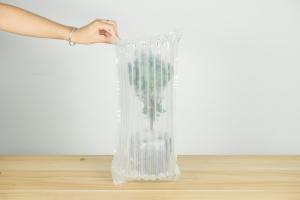Introduction
The source of our drinking water is a crucial issue that concerns everyone. Most people assume that clean water is drawn from rivers, lakes, and underground wells. However, there is a growing concern that a large portion of our drinking water may come from sewage plants. In this article, we will explore this issue in detail and provide insights into the safety of our water supply.
The Source of Our Drinking Water
Drinking water is sourced from a variety of sources such as municipal water treatment plants, surface water, groundwater, and springs. The water is treated and disinfected to make it safe for consumption, and then distributed to households, businesses, and public places. In some cases, drinking water is also sourced from reclaimed water or wastewater treatment plants. The water is treated and reused for non-potable uses such as industrial processes, irrigation, and toilet flushing.
Do We Drink Treated Sewage Water?
In many regions, drinking water is sourced from treated wastewater or sewage plants. This process of water treatment is known as indirect potable reuse. It involves treating and discharging the wastewater into an environment where it can mix with other natural water sources. The mixed water is then treated to make it potable and supplied for human consumption. In some cases, the treated wastewater is injected directly into the ground to replenish depleted aquifers.
Is It Safe to Drink Treated Sewage Water?
The process of treating sewage water involves a series of physical, chemical, and biological steps to remove contaminants and pathogens. The treated water undergoes rigorous testing and monitoring to ensure that it meets the drinking water standards set by the regulatory agencies. The World Health Organization (WHO) and the Environmental Protection Agency (EPA) have established guidelines for the quality of drinking water, including the levels of biological and chemical contaminants that are safe for human consumption.
Indirect potable reuse has been used in various regions such as Singapore, Australia, and California to augment the water supply. According to the WHO, there is no evidence that consuming treated wastewater poses a significant health risk to humans. However, the public perception of drinking treated sewage water is a concern, and there is a need for greater awareness and education about the water treatment process.
The Future of Our Drinking Water
The demand for drinking water is increasing, and the availability of freshwater sources is decreasing due to drought, pollution, and climate change. As a result, water utilities are exploring alternative sources such as desalination, rainwater harvesting, and water reuse to supplement the existing supply. The use of advanced treatment technologies such as reverse osmosis, membrane filtration, and ultraviolet disinfection can remove even the smallest contaminants and pathogens from water, making it safe for consumption.
In conclusion, while it is true that a portion of our drinking water may come from sewage plants, the treated water is safe and compliant with regulatory standards. The use of indirect potable reuse and other advanced treatment technologies can help ensure a reliable and safe water supply for the future.

 how many times do yo...
how many times do yo... how many planted tre...
how many planted tre... how many pine trees ...
how many pine trees ... how many pecan trees...
how many pecan trees... how many plants comp...
how many plants comp... how many plants can ...
how many plants can ... how many plants and ...
how many plants and ... how many pepper plan...
how many pepper plan...





























